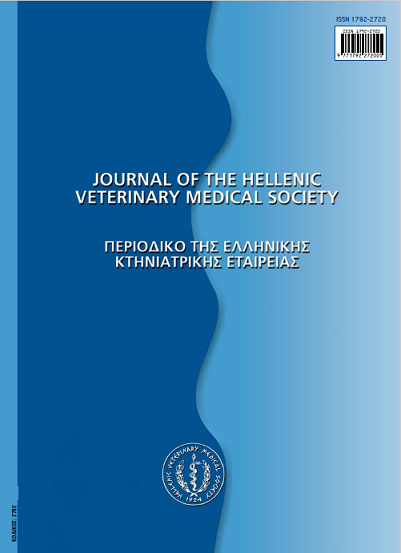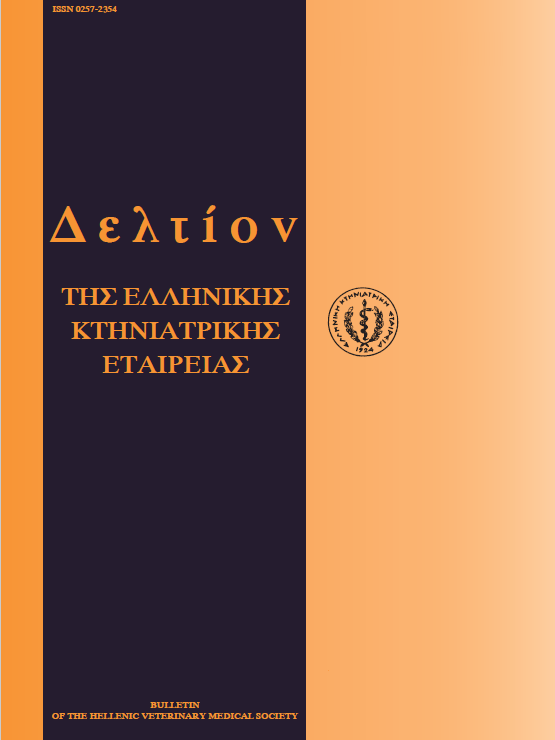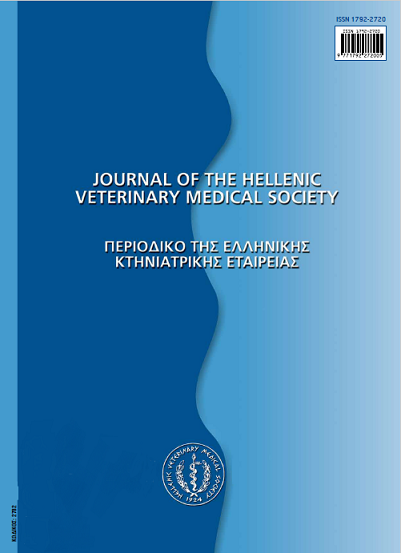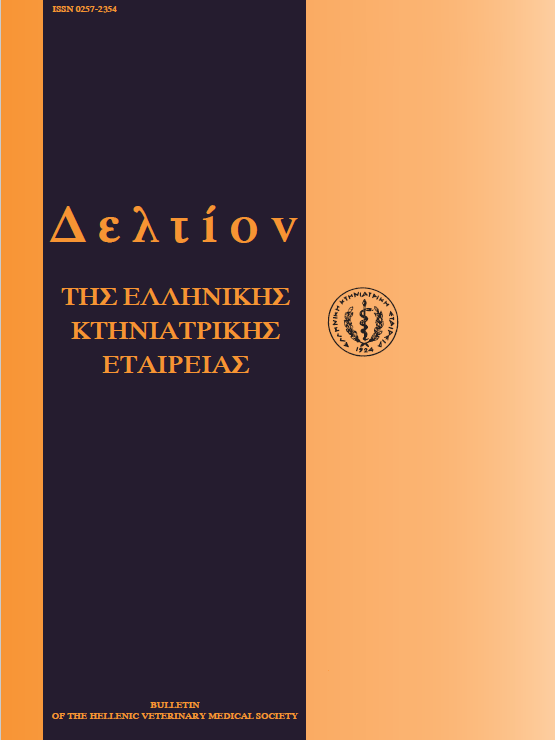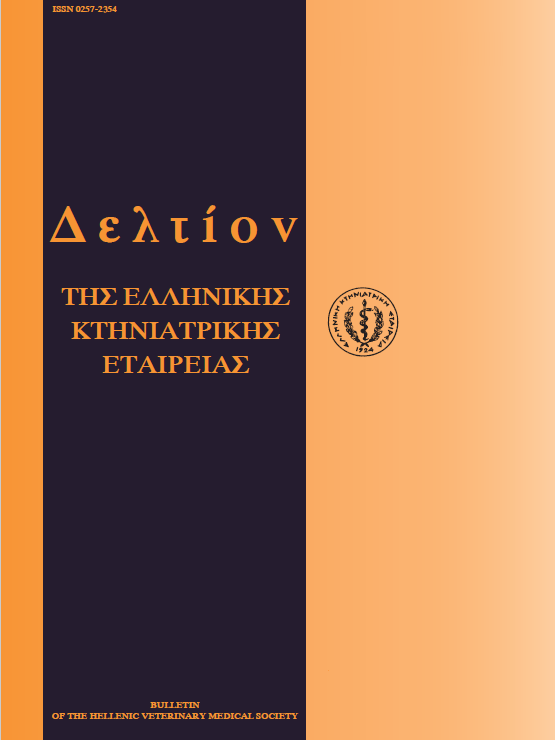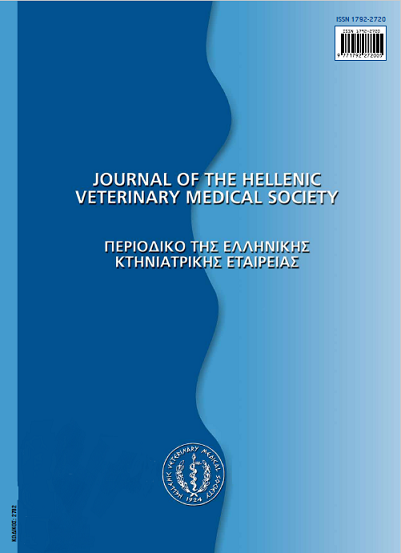Laminitis in dairy cows
Abstract
Laminitis is currently considered one of the commonest causes of lameness in dairy cows in Greece. Nutrition, especially rations based on concentrated feedstuffs, herd management and genetic factors are involved in the etiopathogenesis of the disease. The causative agents, formed usually in the digestive tract, reach the heels via systemic circulation, damaging initially the dermis and subsequently the deeper tissues, thus disrupting normal keratin formation. The disease is characterized by a chronic, or even subclinical course and pathognomonic lesions, like ecchymoses and ulcers in the hindlimb hoof soles. Since early diagnosis is usually missed, preventive measures focused mainly on proper nutrition, herd management and breeding strategies constitute the only possible treatment.
Article Details
- How to Cite
-
PANOUSIS (Ν. ΠΑΝΟΥΣΗΣ) N., & KARATZIAS (Χ. ΚΑΡΑΤΖΙΑΣ) H. (2018). Laminitis in dairy cows. Journal of the Hellenic Veterinary Medical Society, 50(3), 206–211. https://doi.org/10.12681/jhvms.15711
- Issue
- Vol. 50 No. 3 (1999)
- Section
- Review Articles

This work is licensed under a Creative Commons Attribution-NonCommercial 4.0 International License.
Authors who publish with this journal agree to the following terms:
· Authors retain copyright and grant the journal right of first publication with the work simultaneously licensed under a Creative Commons Attribution Non-Commercial License that allows others to share the work with an acknowledgement of the work's authorship and initial publication in this journal.
· Authors are able to enter into separate, additional contractual arrangements for the non-exclusive distribution of the journal's published version of the work (e.g. post it to an institutional repository or publish it in a book), with an acknowledgement of its initial publication in this journal.
· Authors are permitted and encouraged to post their work online (preferably in institutional repositories or on their website) prior to and during the submission process, as it can lead to productive exchanges, as well as earlier and greater citation of published work.







